Rolled Brisket: Temping a Joint of Beef
We look at a lot of recipes and food photos here. I mean, like, a lot. It’s one of the fun parts of our jobs that we get to spend time browsing blogs, perusing recipes, and poking through the food side of Instagram to find material to talk about. Of course we haven’t seen it all, and a new presentation, a new paring, a new sandwich is always intriguing to us.
Intrigued is exactly how I felt when I was pointed to this traditional English rolled brisket. Yes, rolled brisket! The images I found were reminiscent of the roasts I’d seen in old pictures and even cartoons throughout my childhood, and I felt an instant affinity for this foreign and yet familiar dish.
And it doesn’t disappoint. Perfect for a warm weekend dinner on a cold winter night, the tender meat yields plenty of delicious jus for pouring over mashed potatoes or sopping up with fresh rolls. Here we’ll walk you through the basics of a rolled brisket, including, of course, the temps you need to know to make your first attempt at this comforting dish a success.
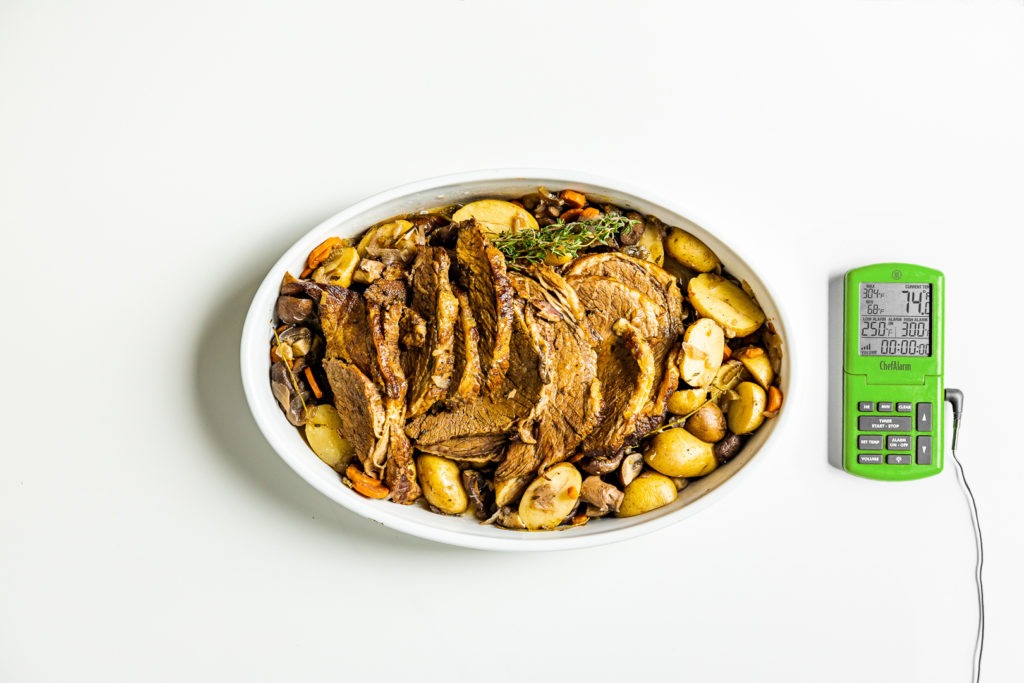
What is Rolled Brisket?
Rolled brisket is simply that: a brisket that is rolled up into a cylinder, tied, and cooked. The transforms a brisket from a large, flat, unwieldy cut into a smaller, easier to handle, less unwieldy roast. Being a British dish, the cut is often braised rather than smoked, though smoking a rolled brisket may be a worthy experiment for a future post.
Tying a brisket joint
A rolled brisket is also called a “brisket joint” where joint takes on the British sense of “a large piece of meat cooked whole or ready for cooking,” and making one is easy. A brisket flat from a 5–6 lb whole brisket (we started with the whole brisket and trimmed the point off of it) is trimmed of fat on one side, seasoned, and rolled so that the grain of the meat runs along the length of the newly formed cylinder. It is tied with butcher twine in as many places as needed to secure it. If you feel uncomfortable with butchery techniques like this, you can most likely ask your local butcher to do it for you.
Cooking a rolled beef brisket
As we said above, this cut is usually braised, and it’s a phenomenal way to do it. The beef is browned and cooked with a little stock or wine in the bottom of the pan, an abundance of vegetables, a good dose of salt and pepper. To make sure the whole roast gets to bathe in the richly flavorful broth, it should be turned every so often during cooking. This will also help the roast joint cook more quickly, as the direct heat transfer from the liquid to the meat is more efficient than the transfer from the air.
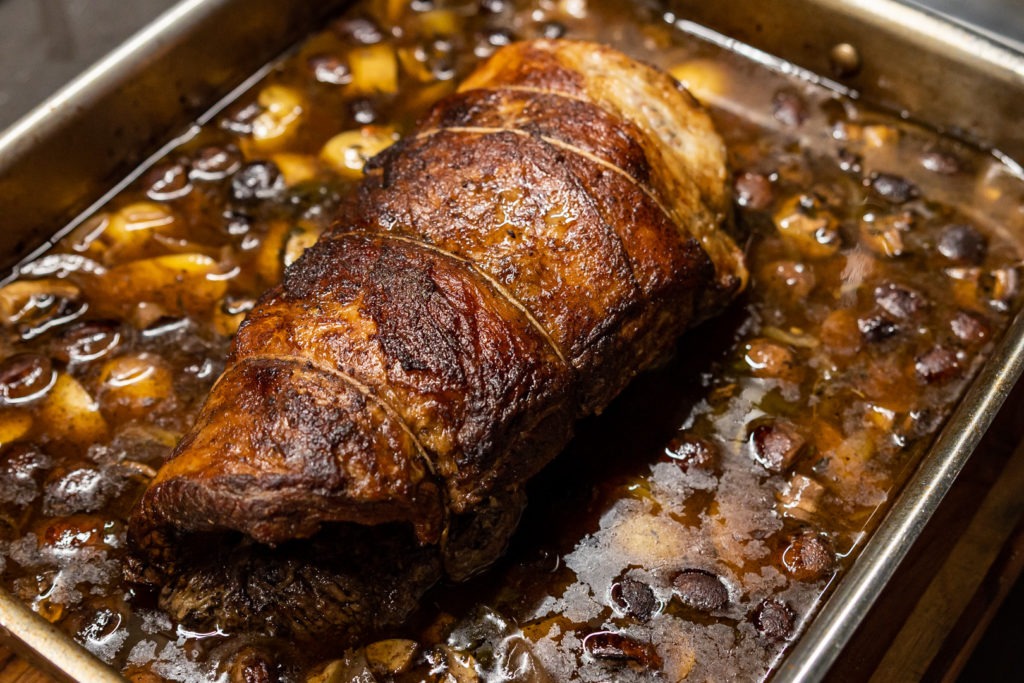
As the brisket flat is full of chewy connective tissue, it will certainly need time to break that collagen down. As with barbecued brisket, this is best accomplished by heating the brisket to an internal temperature of about 200°F (93°C). A ChefAlarm® is perfect for this task, as it can serve as both timer and thermometer for our cook. Using an optional waterproof probe is a good idea if you have one, as the cooking environment can get pretty steamy on this cook.
We’ll jumpstart the cooking by putting the roast in a hot oven—375°F (190°C)—for 20 minutes, then braising at a lower temperature until the brisket reaches 200°F (93°C)—verified with a Thermapen®, of course. Then, to be well sure that it’s tender, we’ll add some potatoes and mushrooms to the braising liquid and cook it all until those are cooked through. That extra time at the final temp will ensure proper collagen melt.
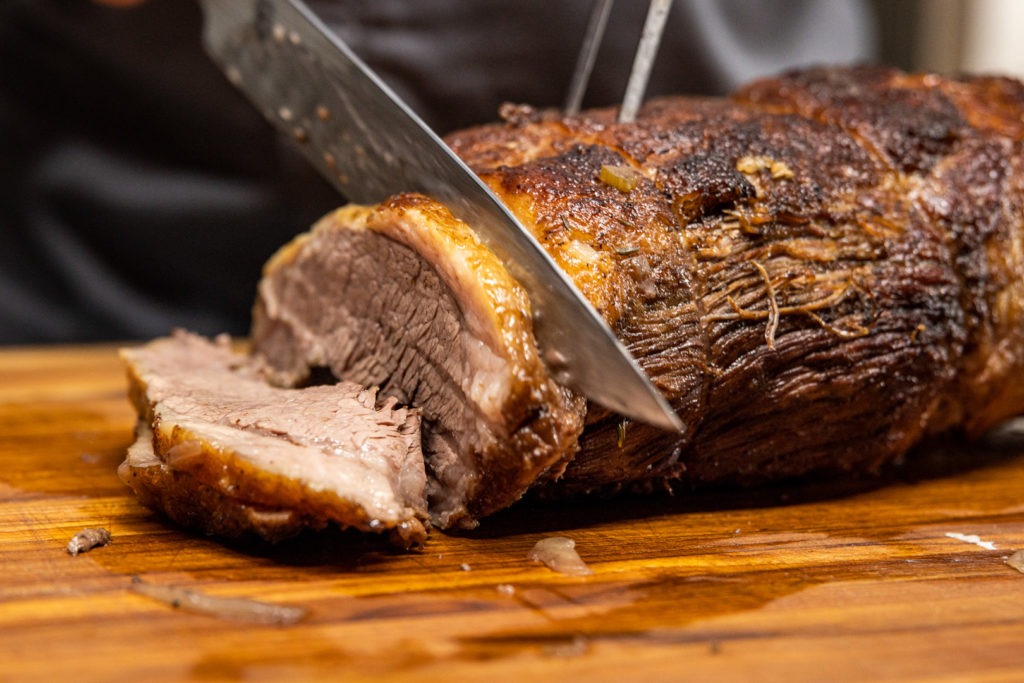
Though it takes a long time (plan 4–6 hours for the cook), this roast of brisket is well worth the time. A lazy Sunday spent pottering around and checking through the kitchen from time to time is a perfect way to do this dish. You’ll get savory, amazing meat and veggies that you’ll love, and the ChefAlarm and Thermapen with give you the confidence that you’ve cooked everything properly. Give this British classic a try and warm up your weekend.
Print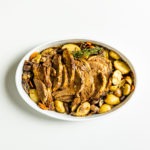
Rolled beef brisket recipe (brisket joint recipe)
Description
Savory braised rolled beef brisket (brisket joint).
Ingredients
- 1 whole brisket, 5–6 lb (or the flat of such a brisket)
- 2–3 Tbsp butter
- 2 carrots, chopped
- 3 stalks celery, chopped
- 2 medium/small onions, sliced
- 3/4 lb mushrooms stems removed and reserved, caps quartered
- 5–7 cloves garlic
- small bunch parsley
- a few sprigs of thyme
- 1–2 pounds small potatoes, quartered or halved
- 1/2 C red wine or beef stock
- Salt and pepper to taste
Instructions
- Preheat the oven to 375°F (190°C)
- If using a whole brisket, trim off the point (reserve for another use). Trim just a little of the fat from the fatcap, and trim the excess fat from the other side of the flat.
- Salt and pepper the meaty side of the cap generously. Roll the cap as tightly as you can, rolling across the grain of the meat, so that the meat grain runs parallel to the cylinder you’re creating.
- Tie the roll in 3–5 places so that it holds securely.
- Salt and pepper the roll generously. Heat a heavy-bottom roasting pan or large cast-iron skillet over medium-high heat. Melt a few tablespoons of butter in the pan and cook the rolled brisket in the skillet until well browned on all sides. Set the roast aside.
- Sweat the onions, celery, carrots, and mushroom stems in the roasting pan.
- Deglaze the pan with wine, place the parsley and thyme in the pan and nestle the roast down among the veggies and herbs.
- Insert the probe from the ChefAlarm into the thickest part of the rolled brisket, set the high-temp alarm for 200°F (93°C) and cook the brisket in the oven for 20 minutes (use the timer built into your ChefAlarm).
- Decrease the heat to 325°F (164°C), cover the brisket with foil and continue to braise, turning the roast in the pan every hour and replacing the thermometer probe in it.
- When the ChefAlarm sounds at 200°F (93°C) peel back the foil and verify the temp with your Thermapen. Add the potatoes and mushroom caps to the braising liquid. Cook uncovered until the potatoes and mushrooms are cooked through and tender (about 30 more minutes).
- Remove the pan from the oven, cut the strings from the roast and let it rest for 10–20 minutes in the juices before slicing it and serving it with the vegetables and potatoes from the pan. Pass the pan juices around as gravy or save it to dip sandwiches made from the leftovers…if there are leftovers.
Shop now for products used in this post:


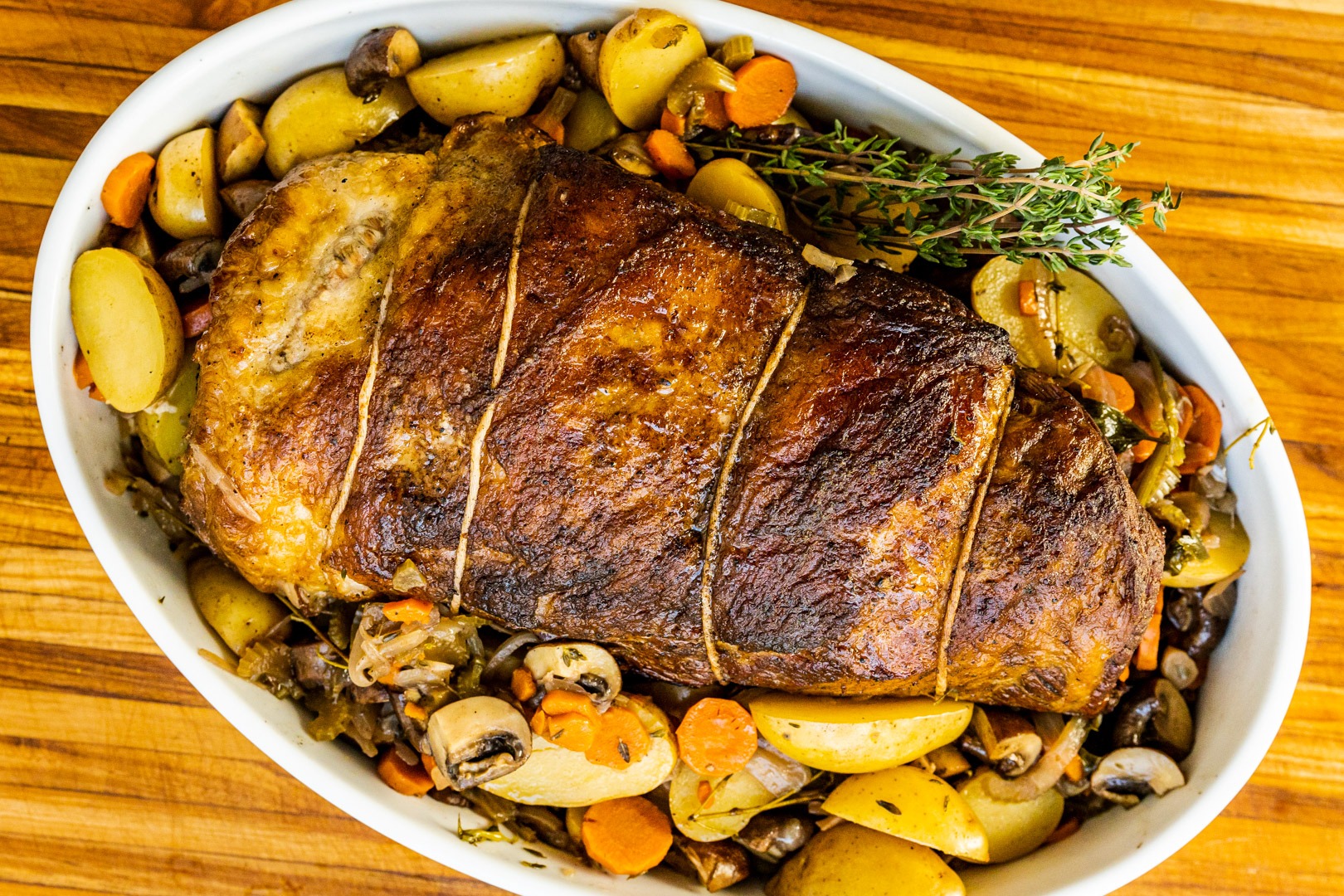
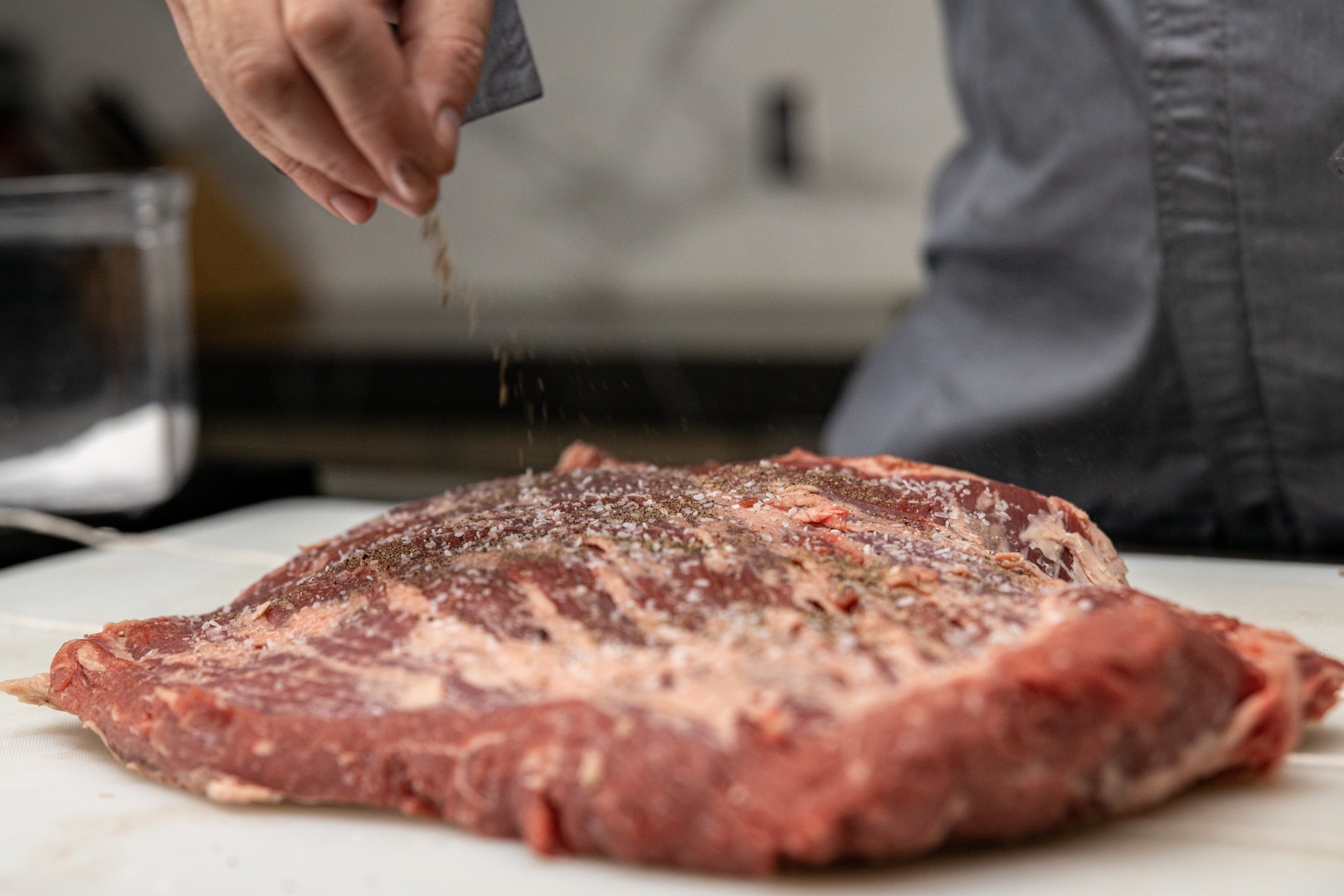
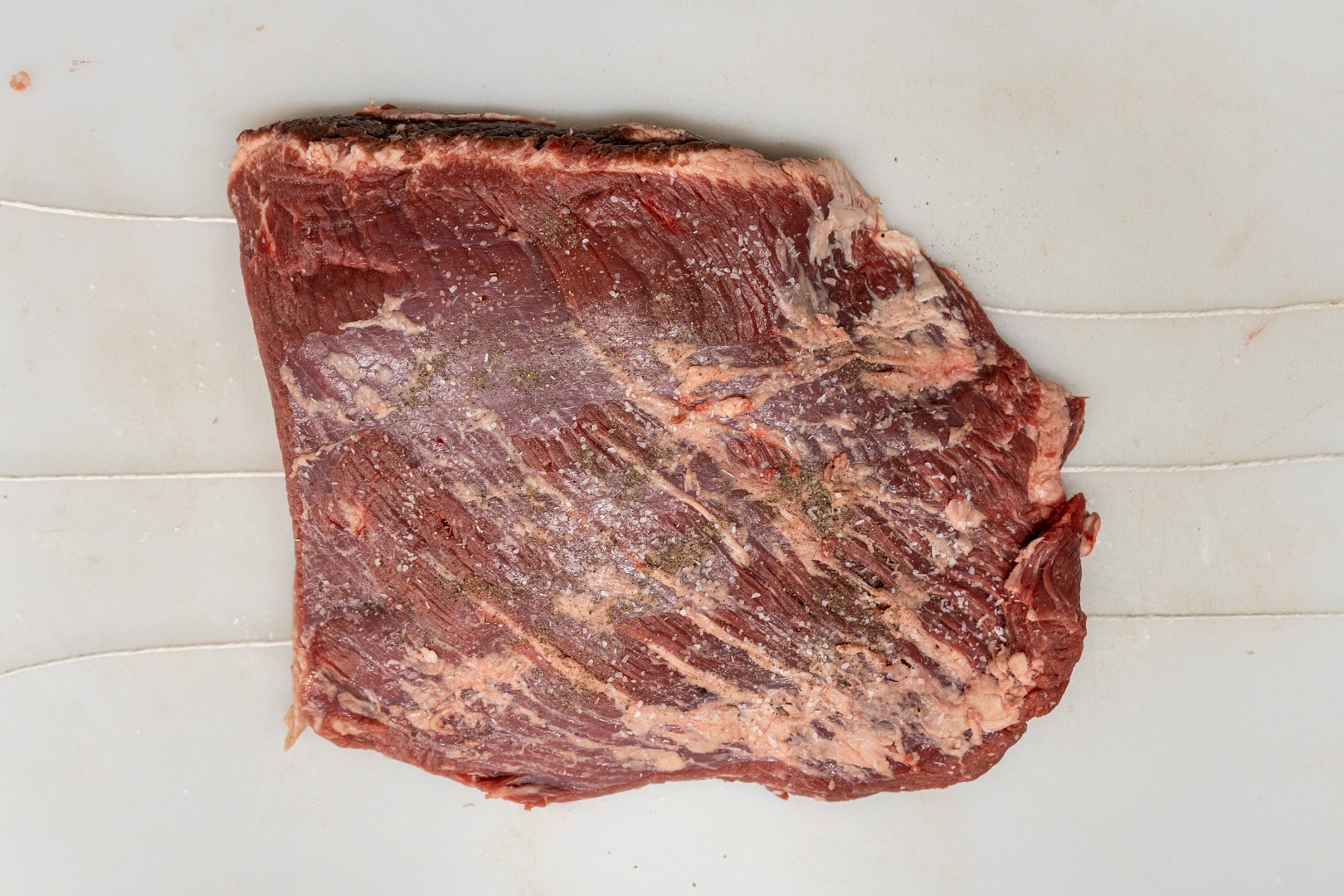
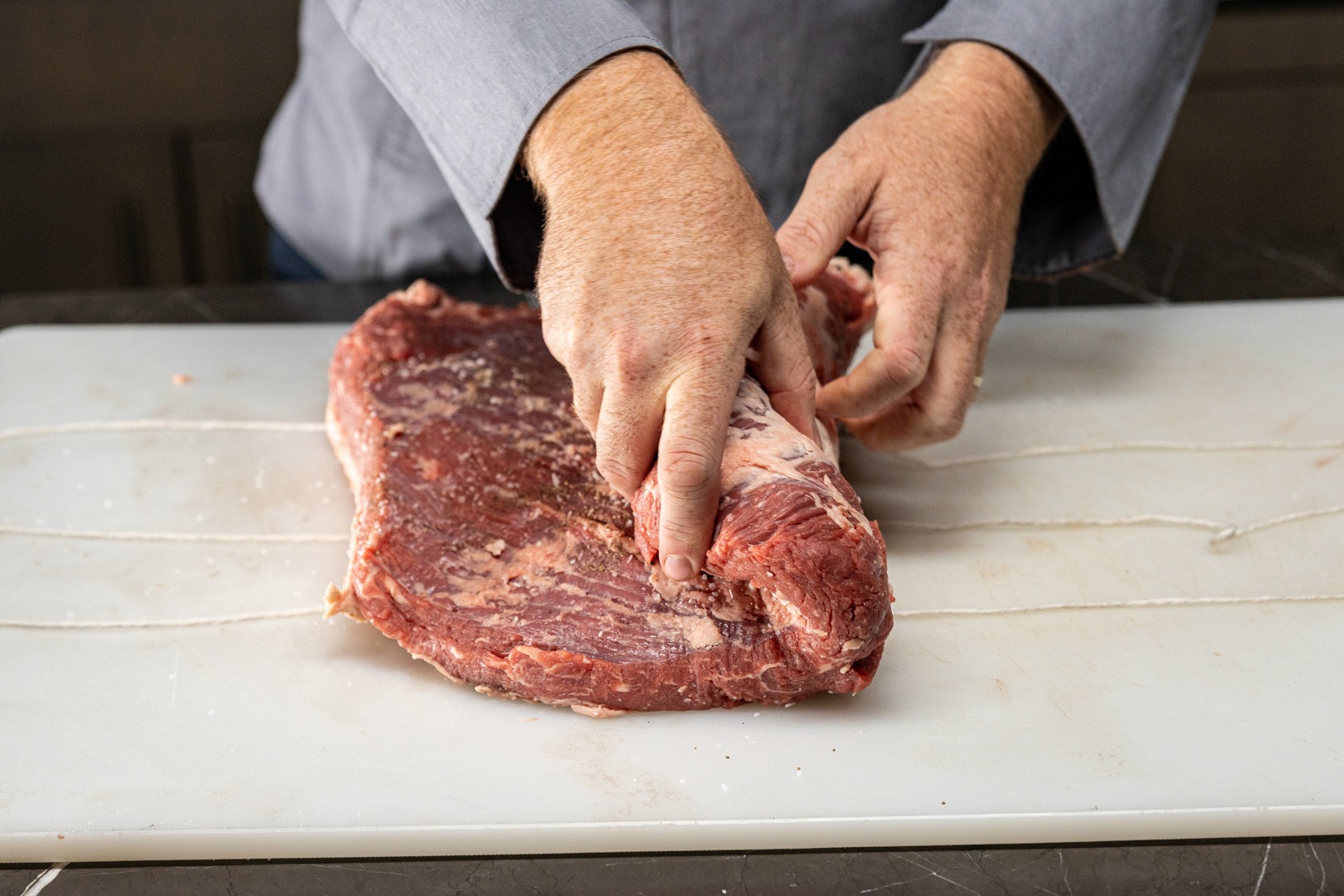
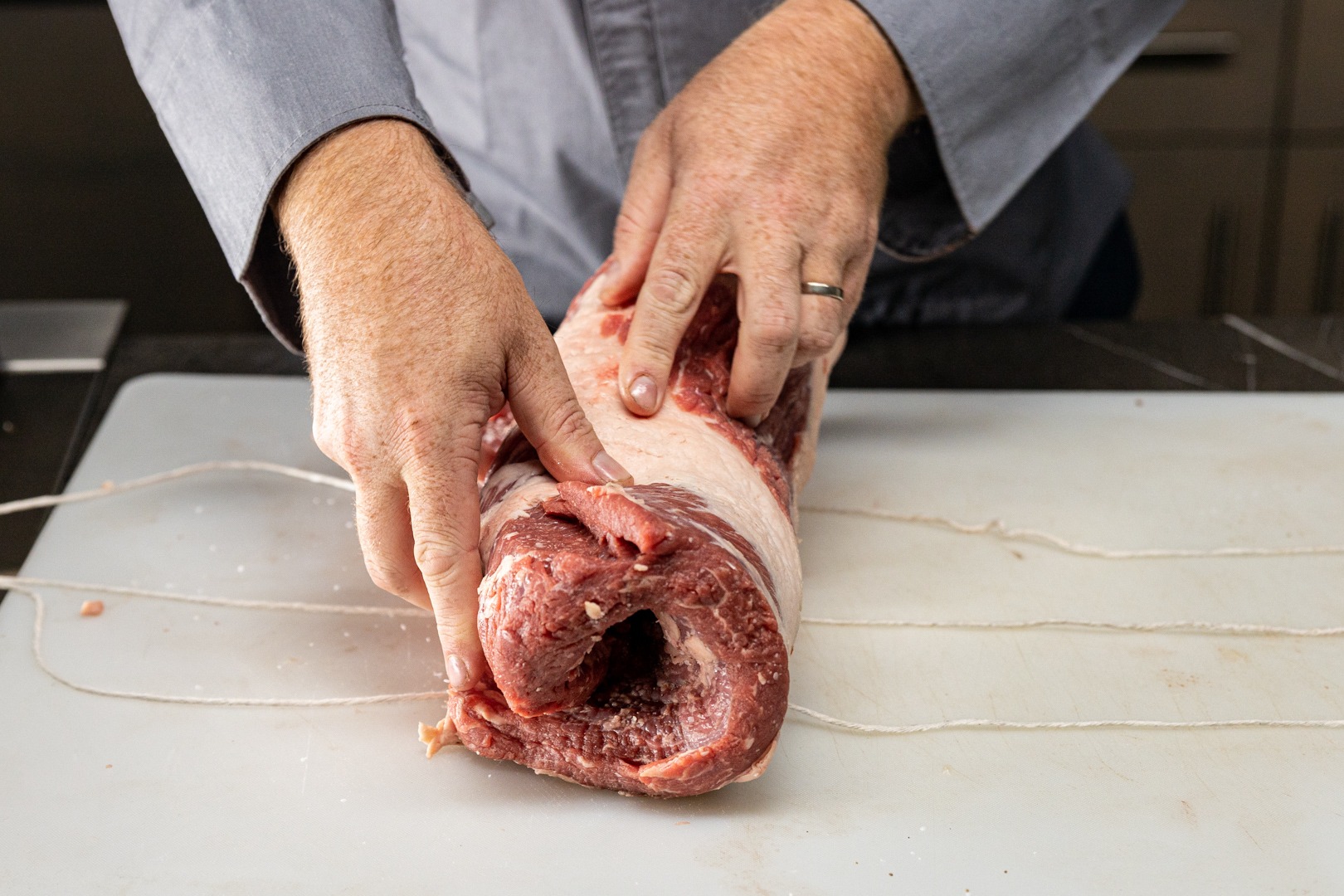
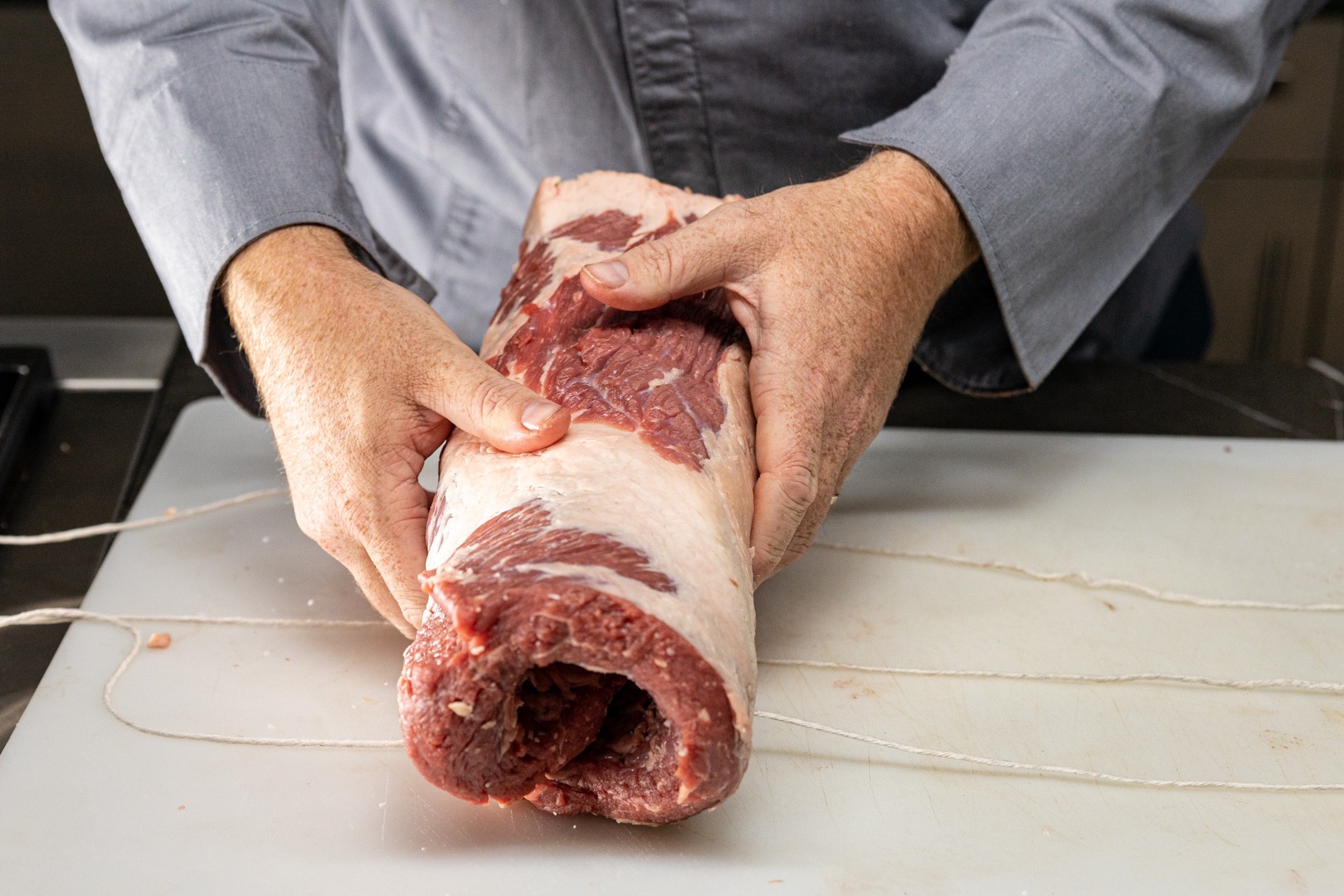
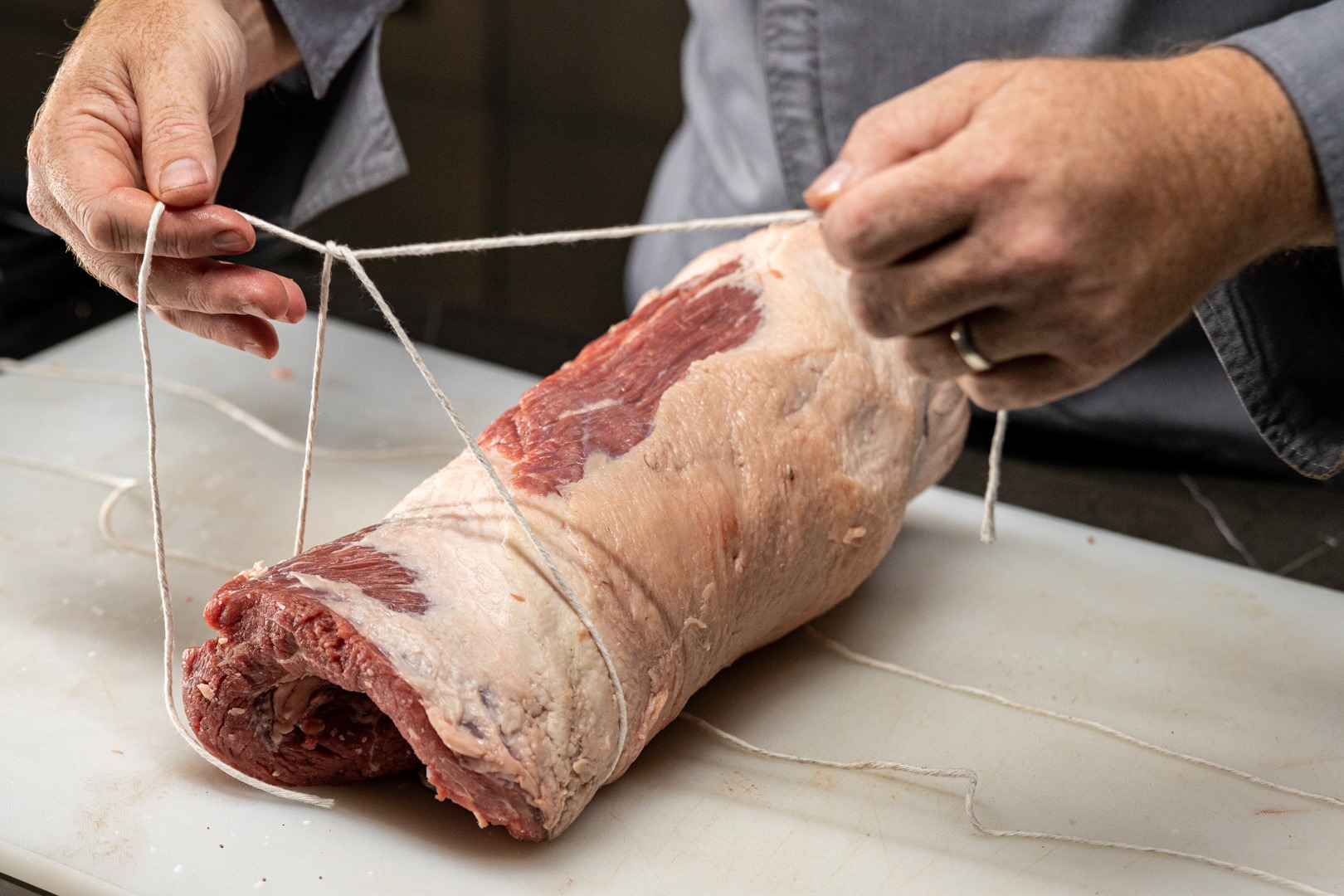
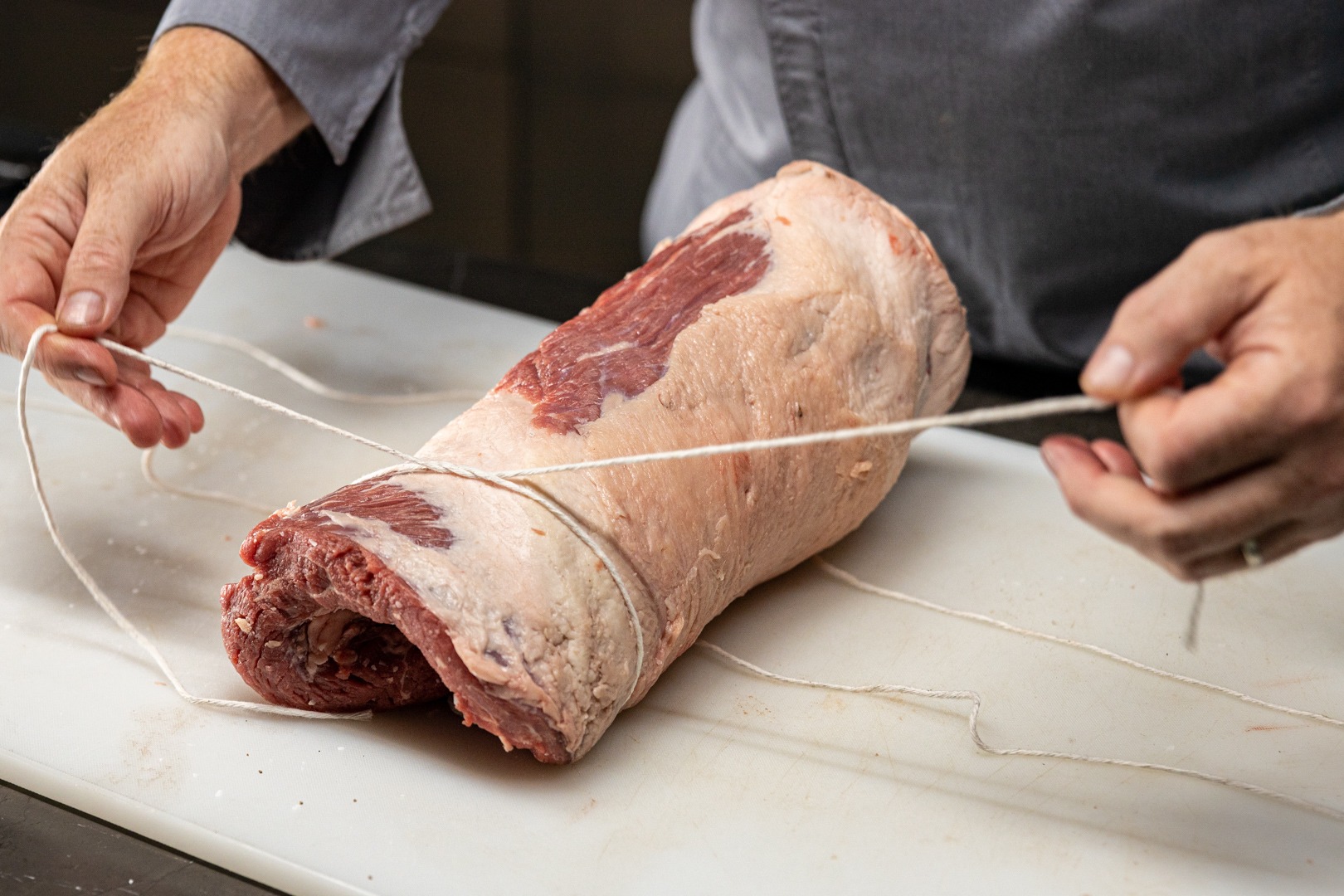
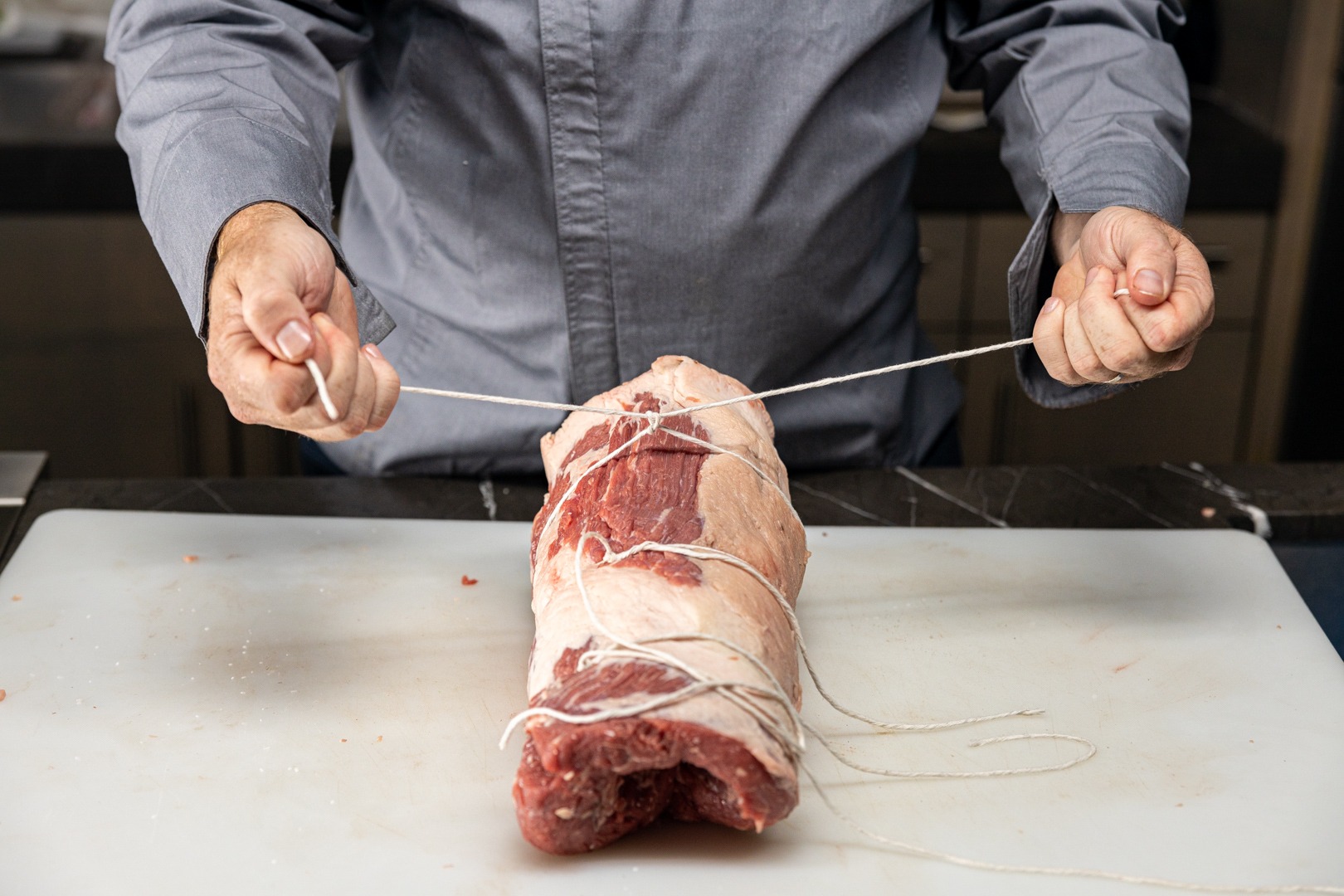
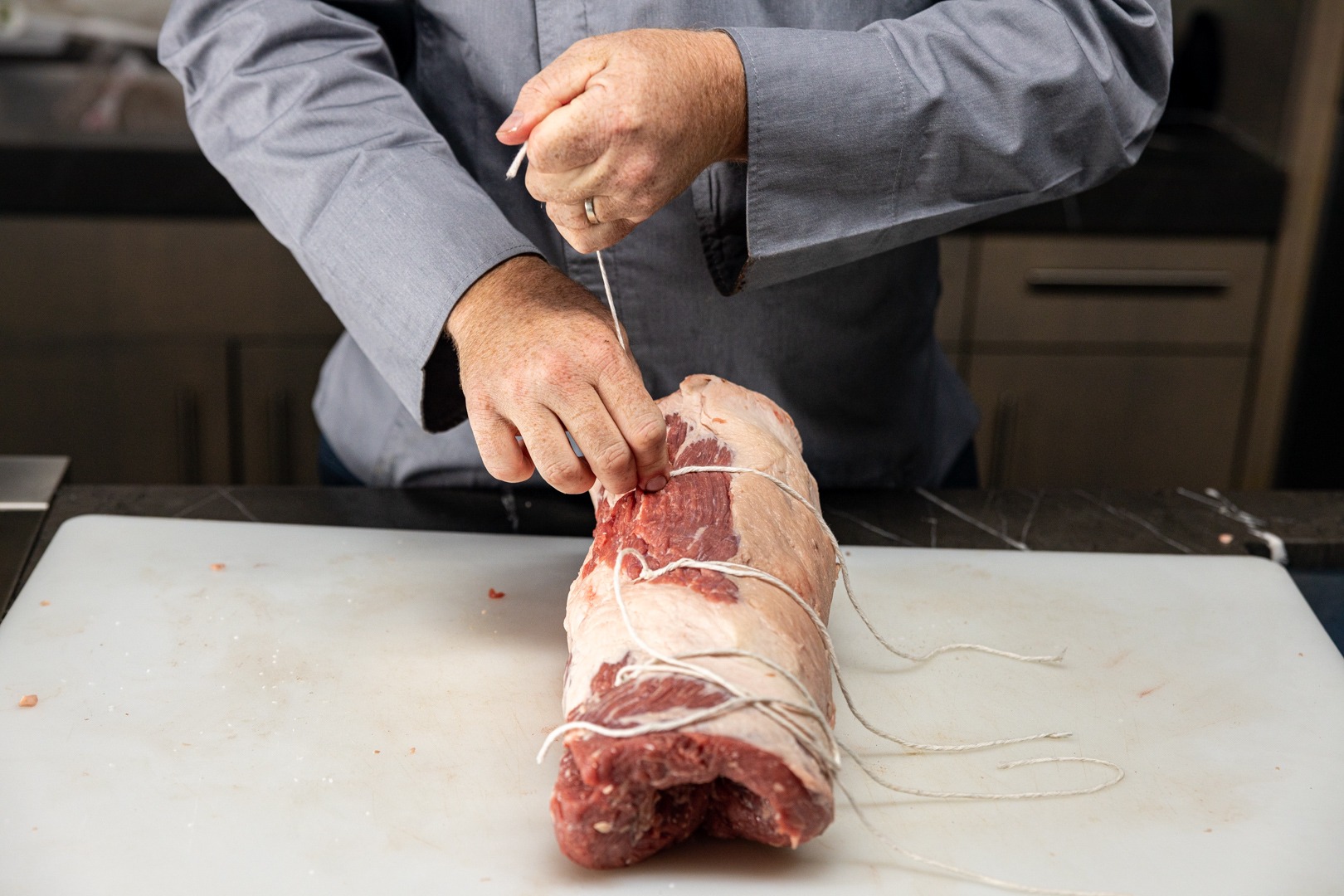
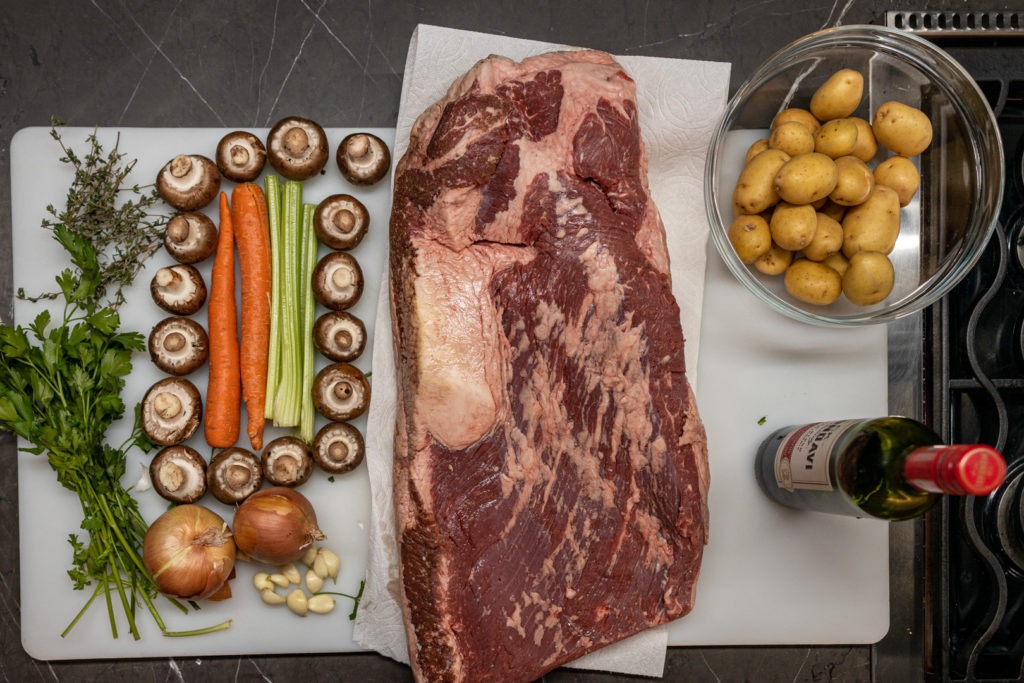
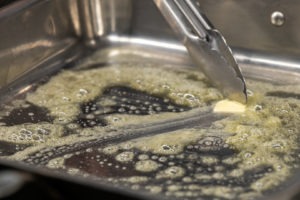
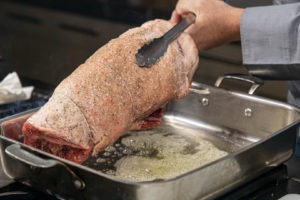
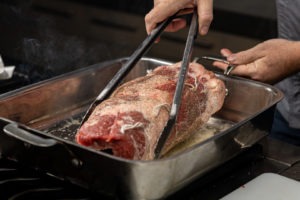
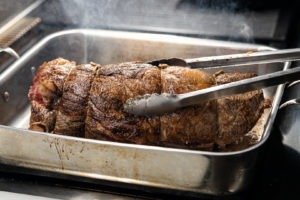

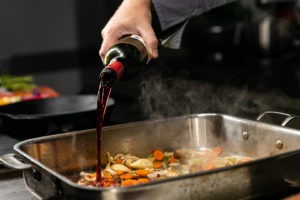
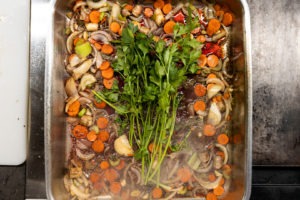
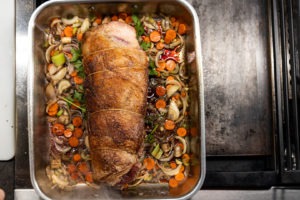
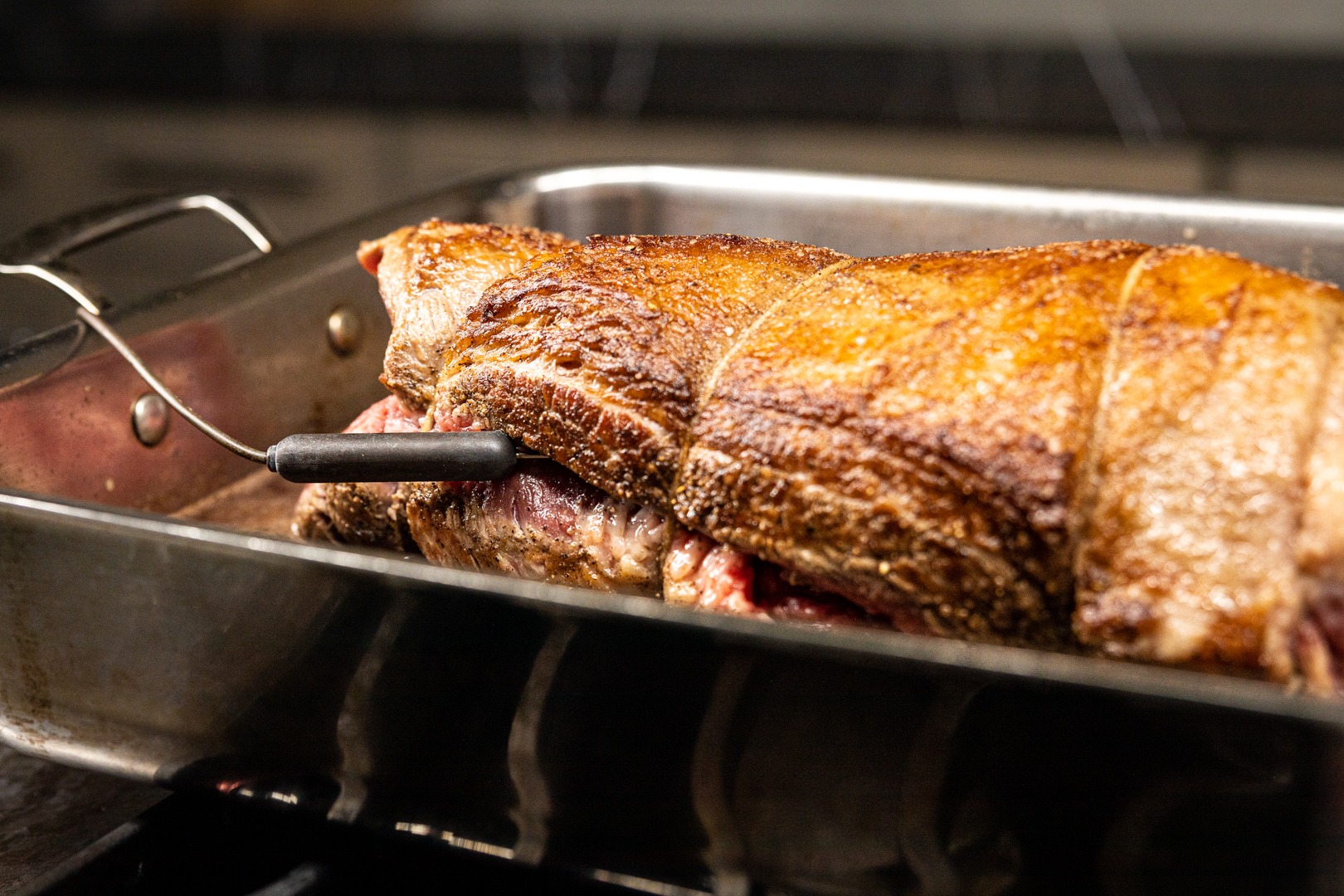
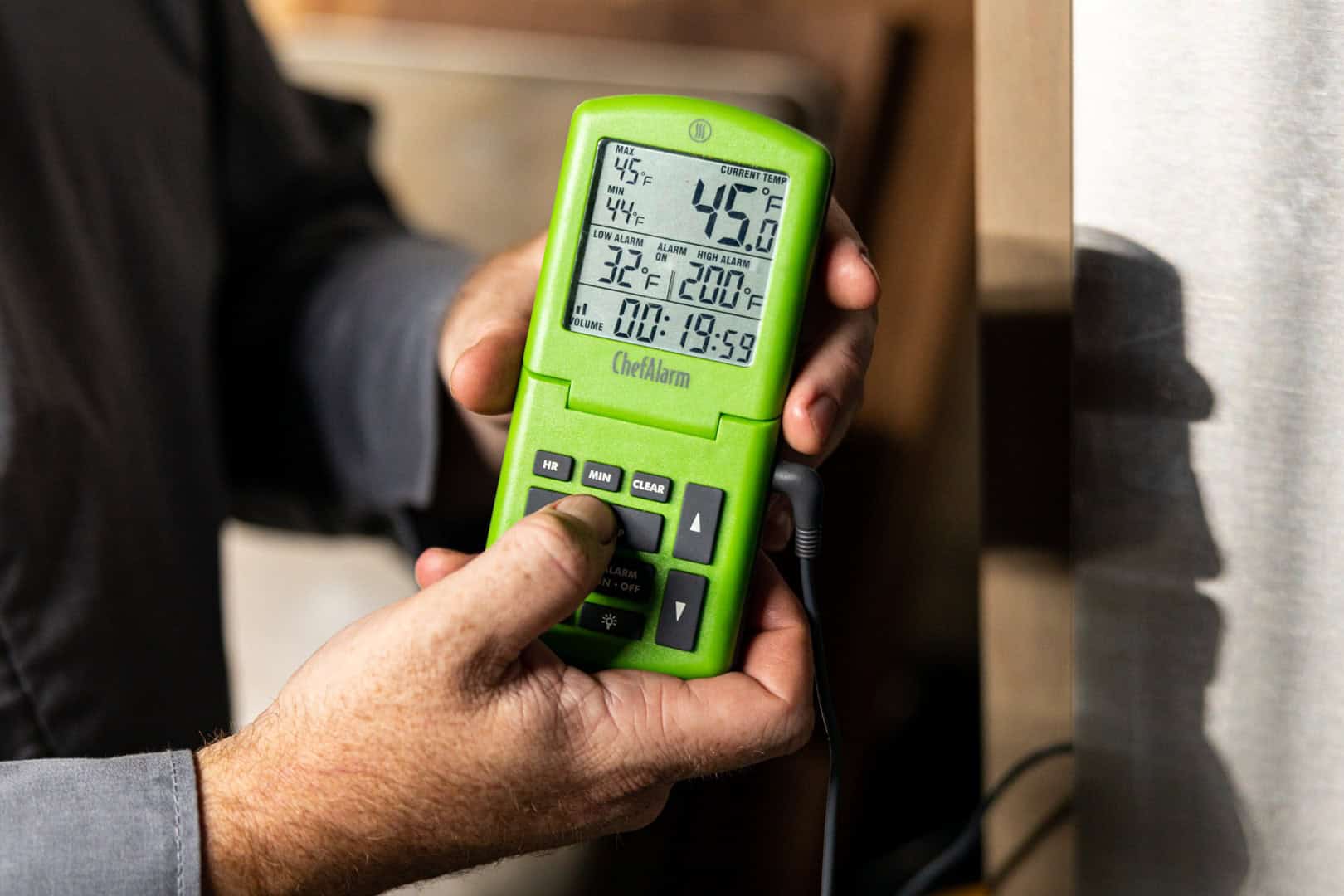
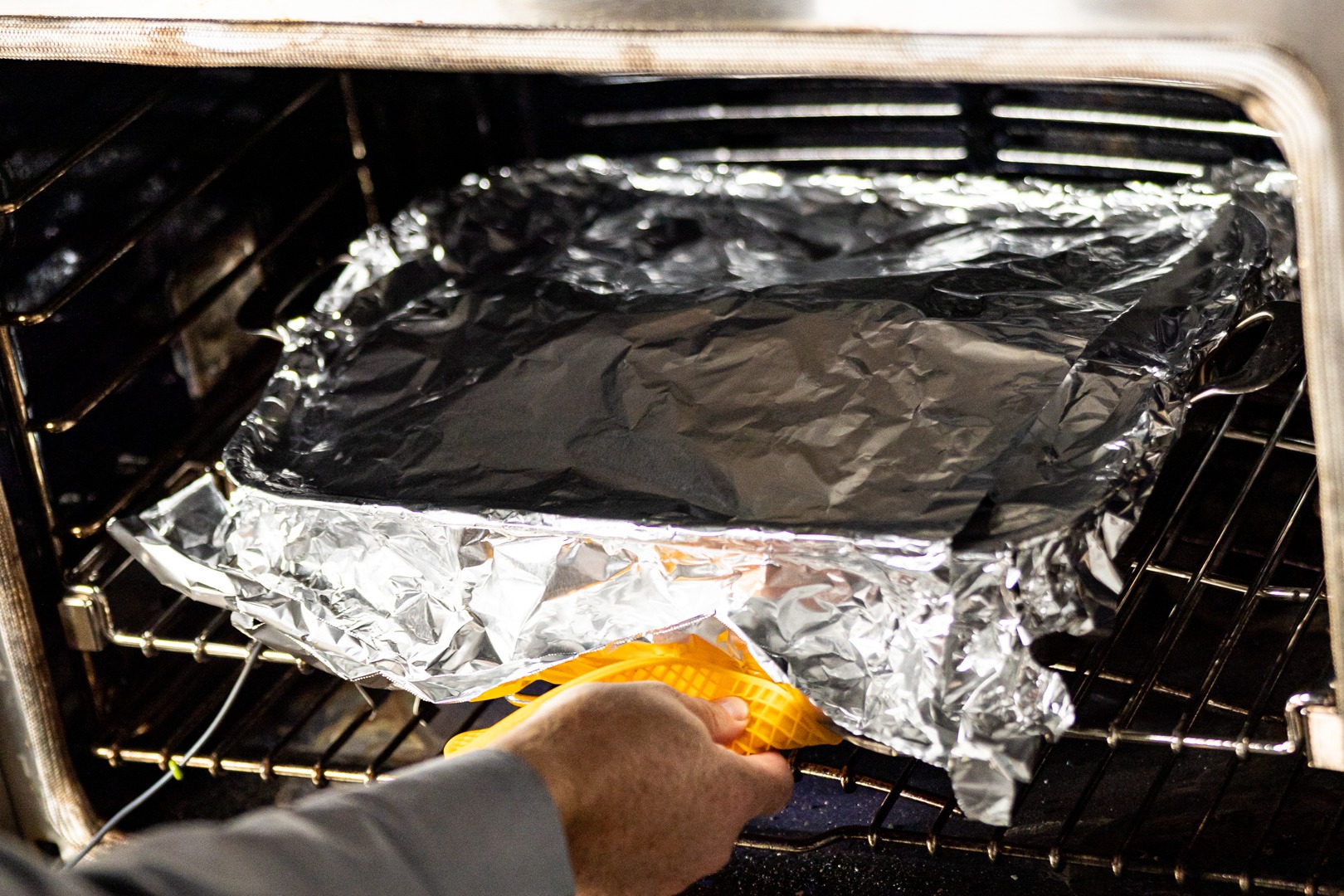
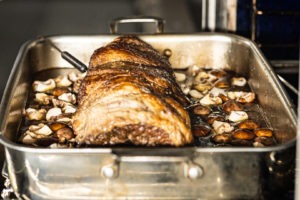
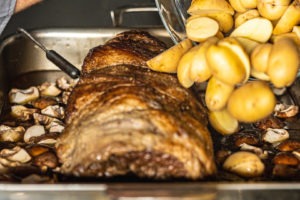
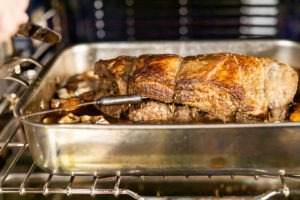
You have the right idea, but are making it WAY too complicated. I have been cooking this recipe for years in a clay pot. Here is what you do:
Put your vegetables in the bottom of the clay pot. This can be nearly anything. I like baby carrots, quartered potatoes, onion, sliced mushrooms and parsnips. No seasoning necessary. No need to add liquid of any kind. Just put the vegetables in wet after they are washed. Take a 3-4 lb brisket the way it comes and lay on the vegetables fat side up Do not .add any spices. Salt and pepper is just a habit and is not needed. Put the cover of the clay pot (soaked for about 20 minutes while you are putting the meat and vegetables in) and place in a cold oven with a temperature probe in place in the middle of the brisket. Cook at 400 degrees and remove when the temperature of the brisket hits 205 degrees F. Let sit for 15 minutes and it will be perfect. Easy does it.
Currently in the oven and smelling very great. I hope it also tastes great. Thanks a lot for sharing the recipe.
This rolled brisket is absolutely wonderful! I’ve made brisket before but never rolled. I believe I’ll be rolling my brisket every time I cook one. So juicy and an awesome smell throughout my house. Thanks for sharing your recipe.
Hi everyone, I made this brisket recipe today May 30th 2021. It was so tender. It was like eating very tender prime rib. This is a keeper. I did not put the mushrooms in because I did not have any available. Next time I make it Ill spice the inside. I also rubbed on liquid smoke flavour and Worcestershire sauce. Delicious. #1
I made this as described. It was clearly one of the top 5 dinners I have ever had, and I’m in my late 70’s, so I’ve eaten a lot of dinners. My butcher said a whole brisket would be about 20 pounds. I asked for a 5-6 pound flat cut. It was so thick I could just get the edges to touch when I tied it. My kids and grandkids loved the results.
How wonderful! Yes, a flat is the way to go, but can still be hard to roll. Well done, sir.
I want to do this with a 2-3 # point. How much time should I roast for? TY
Hard to say, but I’d still plan on a few (3–4?) hours to be on the safe side.
I’d be grateful for the least complicated way to cook my 845grms of rolled brisket as I cannot stand for long.
If standing at the stove presents a problem, you could try using your oven’s broiler to brown the meat on its own, then remove it form the oven. Then toss the veggies with some oil and broil or roast them to get good color on them. Then combine them all in a roasting pan and cook as suggested in the recipe.
Did not see on the recipe when to add garlic, so I just put it in when it went into the oven.
That’s correct!